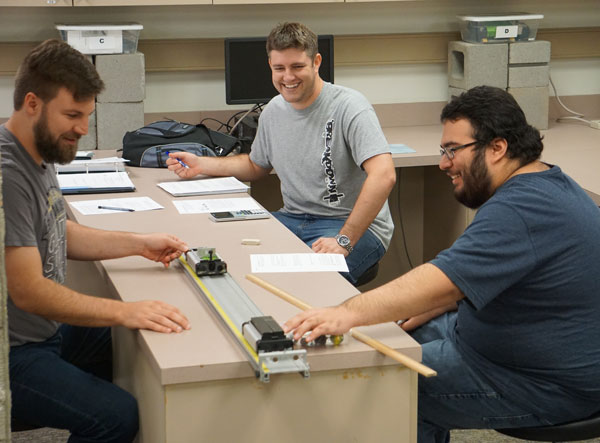Car crashes, cannons and more in physics class

What will happen if two cars collide at maximum speed? How far can you launch a can of soup? Will a frozen tennis ball bounce? These questions are pondered by students in College of the Mainland professor Herman Trivilino’s physics class.
“This class takes math and puts it to work,” said student Sean Anderson.
Today they create mini car crashes to measure the force of impact, altering speed and weight.
The class is preparing future engineers with hands-on experiments, like measuring how high a ball can bounce and the force with which it hits.
Student Daniel McCorry has already noticed physics’ applications to daily life.
“Every time you drive a car, you can think about what’s going on – the car’s acceleration and mass,” said McCorry. “I can apply it by using less gas through accelerating less often.”
After Trivilino’s physics classes, students can dive into upper-level courses at a university in mechanical, chemical and electrical engineering.
“You need physics for any kind of engineering, whether you’re going to design an airplane or a shuttle or a bridge,” said Helvy.
Outside of class, Trivilino continues physics education through “magic shows” for kids at events such as COM’s Family Day. Kids learn about weight distribution when Trivilino lies on a bed of nails holding a brick (without injury). Trivilino launches tennis balls with a soup-can cannon and uses liquid nitrogen to freeze tennis balls, which shatter when he throws them against a wall.
“Physics changes how you think. In moving the thermostat, you think about the effect. You have to maintain the same temperature difference between the inside and outside and be energy-efficient,” said Trivilino, who has a master’s in physics from Sam Houston State University.
“No one can go through a day without seeing physics’ effects.”
For more information on classes, contact htrivilino@com.edu or 409-933-8109.
